Menu
You can manage your membership and billing method by clicking here
Terms of Service
Privacy Policy
Copyright © 2025 Office of Immigration Australia, a private company registered in Australia. All Rights Reserved.

Checking membership status...
 EXCLUSIVE MEMBERS ONLY ACCESS
EXCLUSIVE MEMBERS ONLY ACCESSTo access this month’s edition & Member’s only resources, enter your registered email address.



Exclusive Australian Immigration News, Updates & Opportunities
April 2024
This bulletin is for members only, and provides our members with month to month updates on Australian immigration policy changes and consequential opportunities. Opportunities are found via federal and state government policy shifts for the demand and supply for certain occupations.
This bulletin will keep you up to date so that you do not have to employ expensive immigration lawyers to provide you with monthly research.
April 2024 has landed, and new data released in March has revealed January 2024 to be the highest January migration intake ever recorded in history and more than double the intake recorded in January 2023!
When we pair this with the latest national accounts data … what it shows is that migration is still picking up!
2024 IS NOW ON TRACK TO “BEAT” LAST YEAR’S RECORD IMMIGRATION LEVELS!
In this month’s ‘Federal News‘, Chief Economist Leith Van Onselen says January’s migration to Australia was an “extraordinary number” and the “highest” in history, as immigration reached record numbers, with more migrants arriving in January than ever before, including 125,000 permanent and long-term arrivals!
Also in this months Federal News, we discuss why Japan’s youth are working in Australia in record numbers and also how immigration helps Australia reduce debt, boost productivity and counter the ageing population!
In this month’s ‘State News’, skilled workers residing offshore remain eligible to be considered for ALL State and Territory nominations! Please view the State Migration Section of this month’s bulletin for all State and Territory program and opportunities available!
In this month’s ‘Economic News’, already 36 per cent of occupations in Australia have experienced severe worker shortages in the past year and business leaders are again praising Australia’s migration intake, with the country set to rely on large numbers of foreign workers to fill 880,000 roles in industries including health, construction, engineering, technology, teaching and more…
Also in other economic news, we take a closer look at the sheep-farming town of Katanning, which is now considered one of the most diverse pockets in Western Australia with more than 50 language groups living in harmony!
In this month’s ‘Student News’, the Government has replaced the ‘Genuine Temporary Entrant’ requirement for student visas with a ‘Genuine Student’ requirement. The new GS requirement is intended to include students who, after studying in Australia, develop skills Australia needs and who then go on to apply for permanent residence.
The new GS requirement is effective for student visa applications lodged on and after 23 March 2024, and does NOT apply to student visa applications lodged before 23 March 2024 as these applications will continue to be assessed against the pre-existing GTE requirement.
All this and much more in the April issue of The Australian Immigration Bulletin! Let’s take a deeper look at what has happened so far and what is planned for the remainder of April 2024 in Australian Immigration, so that you can start planning!
All members now have FREE access to an online IELTS English Platform and course to practice, study and improve their English and IELTS score. The IELTS exam is one of the key recommended exams you will need to take in order to Apply for Skilled Migration to Australia and the better your results, the higher points you will get when submitting an expression of interest. The advanced English and IELTS platform will allow all members to practice Mock IELTS Exams, learn cutting edge tips and gain a greater understanding of how to achieve a Band 9+.
All members also have access to “ImmiConnect” which is now available in the member’s area. ImmiConnect is the Office of Immigration Australia’s Employer Sponsored program which allows overseas workers to receive job interview invitations from Australian employers, when job opportunities come available.
The program aims to bring globally mobile, highly-skilled and specialised individuals to Australia who can fill critical areas of need.
ImmiConnect is exclusive to active Australian Immigration Bulletin Members only. You must be a current Australian Immigration Bulletin Member to be eligible to receive job interview invitations.
So if you are interested in receiving these invitations, please sign up for FREE by Clicking “ImmiConnect” and adding your name and email address.

*2 WINNERS DRAWN EVERY MONTH:
Current Round: March 2024 – July 2024
(10 Winners/Prizes in total)
There is always a winner, and the next one could be you!
The winners of the April 2024 Immigration Prize Giveaway were drawn at 10am AEST on 1st April 2024.
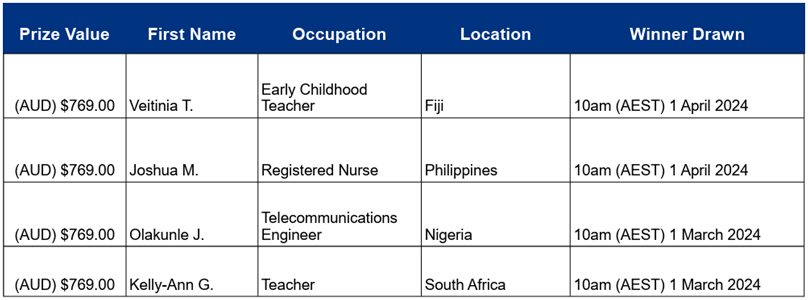
Congratulations to the April 2024 winners! You have been sent a confirmation email with details on how to claim your prize!
The next 2 lucky winners will be drawn at 10am AEST on 1st May 2024.
As of 6th July 2022, people entering Australia do NOT need to provide evidence of Covid-19 vaccination status. Additionally, people leaving Australia will NOT be asked to provide evidence of their vaccination status. Unvaccinated visa holders do NOT need a travel exemption to travel to Australia. It is however important to remember that airlines, vessel operators and other countries may have specific requirements that travellers need to comply with.
Please see the list of vaccines that are recognised by the Australian government for travel purposes here.
This Bulletin and its contents is for general information purposes only and should not be used as a substitute for consultation with professional advisors.
As legislation and travel requirements are constantly changing, we strongly recommend obtaining advice on your individual situation from a Registered Migration Agent.
Please click here to book a consultation with one of our Registered Australian Migration Agents, located in Australia.
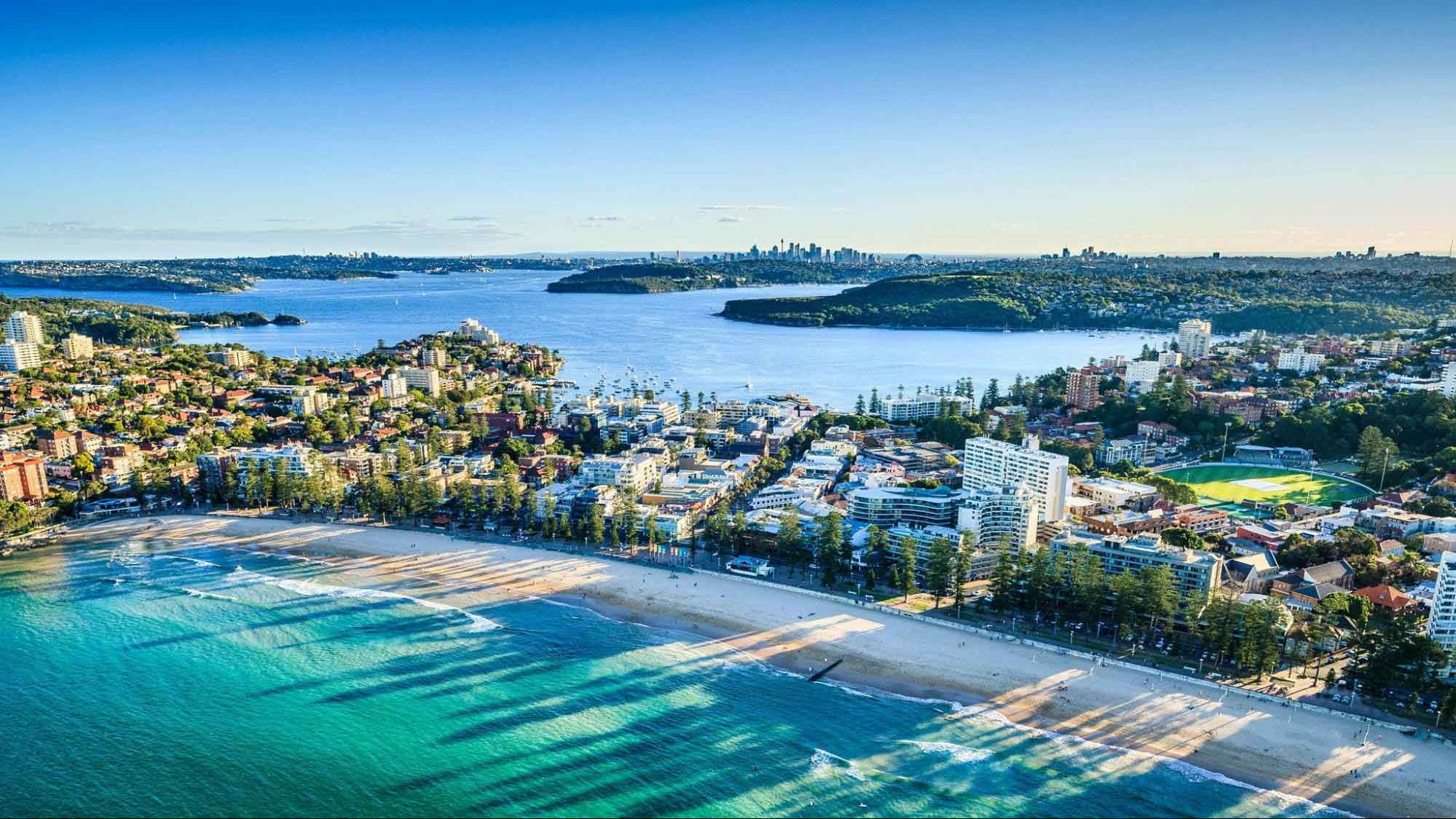
Manly – Sydney, New South Wales
The Results of the August 2021 census were made public on 12th July 2022, and revealed that Australia has become a majority migrant nation, as the census data shows for the first time that more than 50 per cent of residents were born overseas or have an immigrant parent. Last year’s census counted nearly 25.5 million people, including 1 million new residents.
Australia’s 2023-24 Migration Program has been carefully designed to boost the social and economic outcomes that meet Australia’s needs. In fact, the migration programme was first launched in 1945 following the aftermath of World War 2. Given this long history, it is worth understanding how it works. The Australian Immigration Bulletin exists to help explain this in more detail.
As we’ve entered the 4th month of the year, join us for a look at the latest news and developments in the world of Australian Immigration!
We asked those who have established themselves with skilled jobs to share their experience and tips for a career in Australia.

We spoke with Simone, a skilled migrant working as a Head Chef for the last three years.
How did you start your career in Australia?
I studied culinary arts for four years back home in Jamaica. After a couple of years of doing work experience overseas, I got an offer to become a chef here in Australia.
What are the job trends in hospitality?
It’s pretty easy because hospitality is a fast-paced industry, and most places have a high turnover rate. You don’t need much experience to start in hospitality unless you’re doing certain areas, like being a chef or being a manager. That’s where you need more experience. So I wouldn’t say it’s a hard industry to get in, but you need qualifications to progress to other jobs. You can do qualifications at TAFE, or at culinary schools like I did. Once you get in, it’s all on you to work your way up.
How can migrants be competitive in seeking hospitality jobs?
Well, I think the fact that Australia was looking for chefs outside of Australia, it shows that there is room in this market for skills. What we need to do in order to be competitive is to make sure that you’ve done the right courses to be qualified, and after that, make sure you’re getting experience from a range of different businesses. From there, you just work your way up by working on your experience.
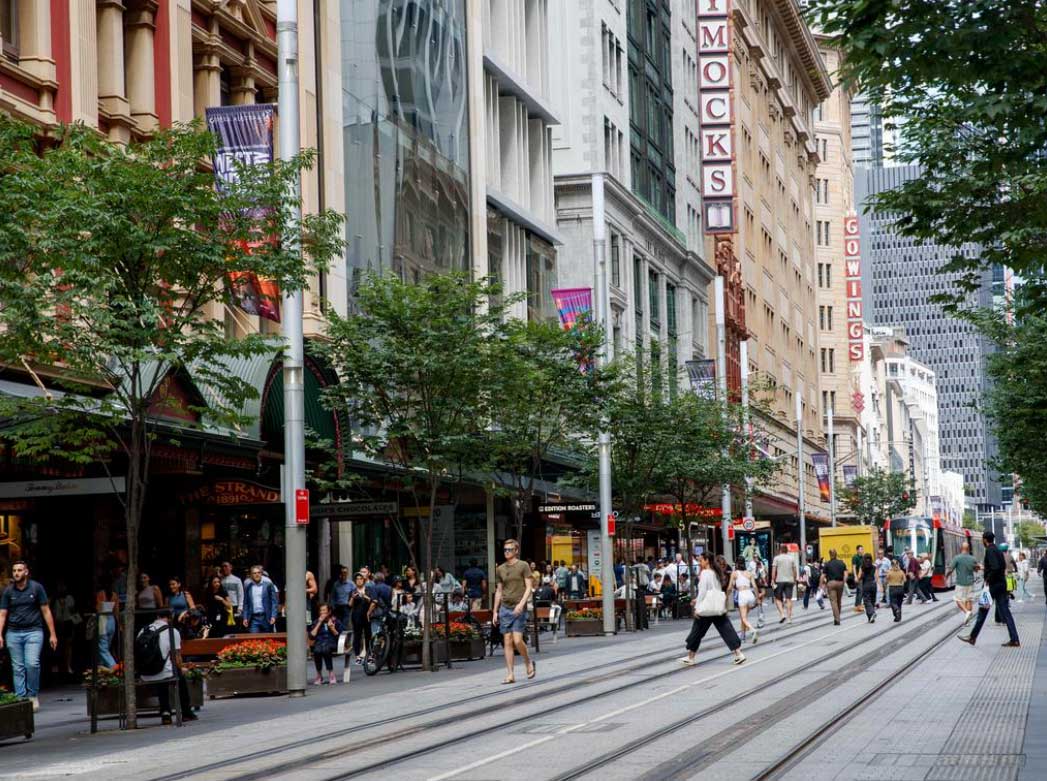
‘Highest in history’: ‘Extraordinary number’ of migrants came to Australia in January! Australia is now on track to “beat” last year’s record immigration levels!
According to the Australian Bureau of Statistics latest national accounts for the fourth quarter … Australia’s population grew by 680,000 people last calendar year.
Chief Economist Leith Van Onselen says January’s migration to Australia was an “extraordinary number” and the “highest” in history! Immigration to Australia has reached record numbers, with more migrants arriving in January than ever before – 125,000 permanent and long-term arrivals!
“It was an extraordinary number,” Mr Van Onselen said. “When you pair this with the latest national accounts data … what it basically tells you is migration is still picking up.”
Data released in March showed the highest January intake ever recorded and more than double the intake recorded in January last year.
Australia smashed that out of the water and all it tells you is net overseas migration surged higher than its peak from mid last year and this years target is going to be absolutely beaten.
Migrants make a valuable contribution to Australian society and fill workforce shortages. They don’t just create demand for housing, they also help build the homes Australia need.
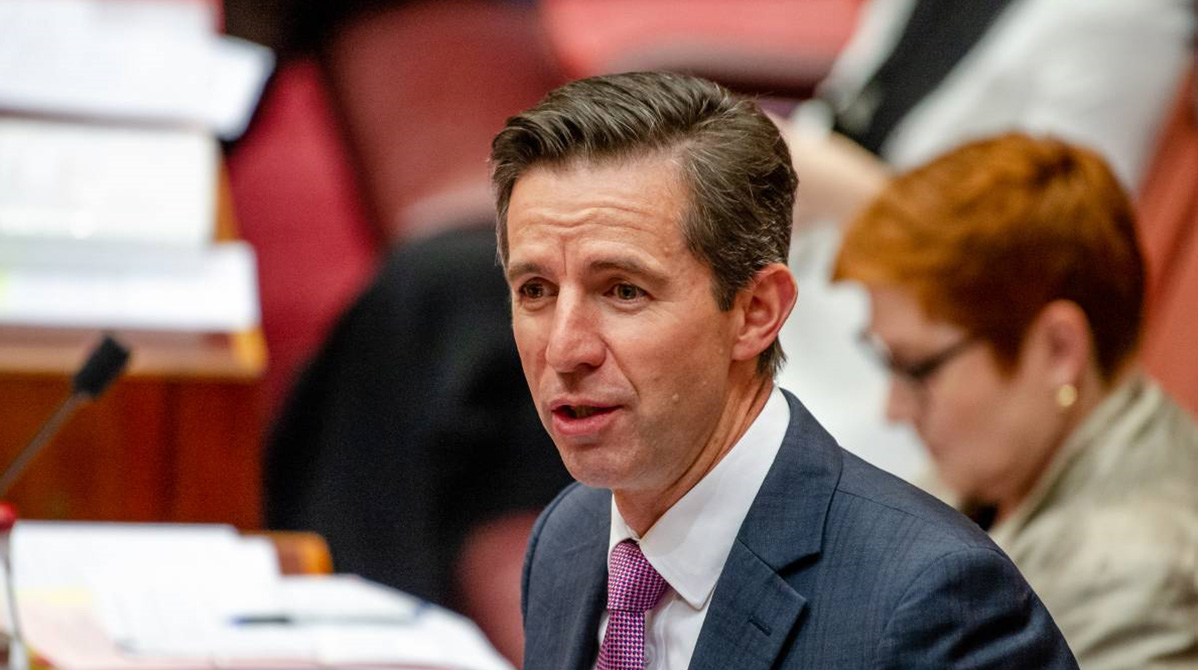
Shadow Foreign Affairs Minister Simon Birmingham says migration is “incredibly important” to Australia.
Mr Birmingham discussed the record migration intake which occurred in January.
“Particularly skilled migration has been and continues to be critical in terms of the mix of skills that our industry and employers need,” he said.
“Filling labour shortages where they occur and of course ensuring that in terms of the age-mix of Australians, we maintain tax-contributing productive workers in our economy.”
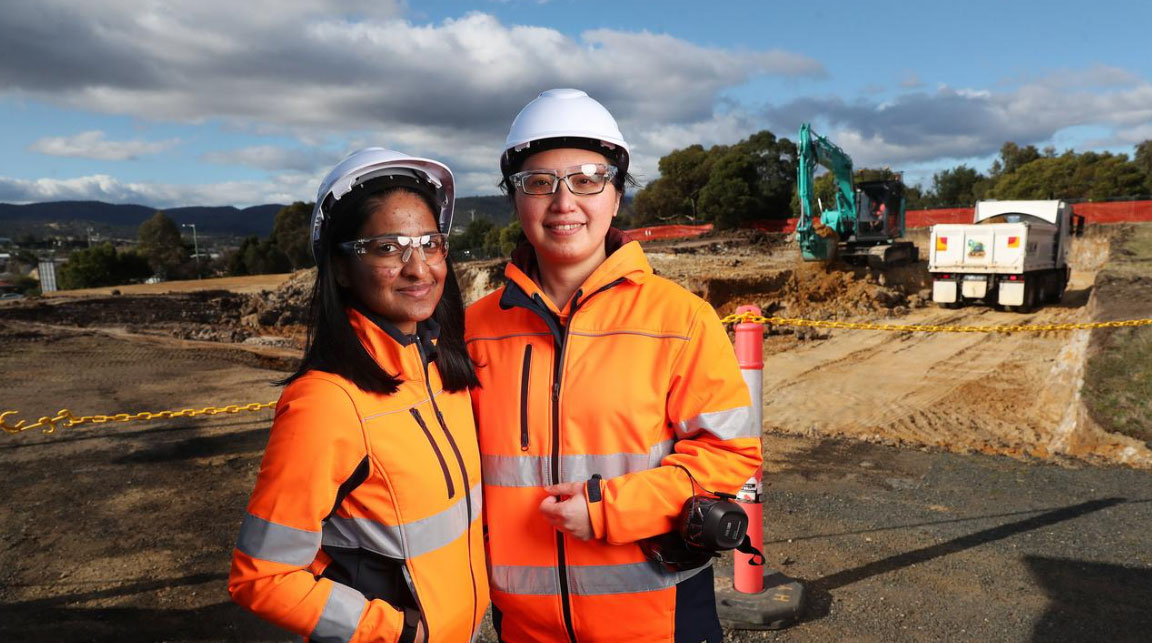
They study, work, travel and shop – and they’re back. Young foreigners are leaving homes in Asia, South America and Europe, and flooding into the arrival halls of Sydney’s Kingsford Smith airport and Melbourne’s Tullamarine airport in record numbers.
In post-pandemic Australia, temporary visa holders are serving guests in cafes and bars, driving ride-share passengers, sitting in classrooms and roaming the country’s sights, typically spending way more than they’ll earn during their stays. If the statisticians’ early projections prove to be correct, Australia is in the middle of a colossal, migration-powered population surge.
In the year to June 2023, the nation added 624,100 people; the natural increase (births less deaths) was an estimated 106,000, with net overseas migration of 518,100. We’ve never experienced a population increase of that size, which is due overwhelmingly to temporary migration – students, backpackers, skilled workers and Kiwis – at a rate of more than 10,000 additional people a week. As the calendar flipped over to November, there were 866,000 foreigners here on student and graduate visas alone. More than two million temporary visa holders have work rights. Many, if not most, of these young people will become permanent residents, such is today’s two-step migration path.
As a proportion of the population, there are now more people living here who were born overseas than at any other time in the past 130 years. Home Affairs Minister Clare O’Neil says we have an ageing population and poor productivity growth, while being in a global war for talent. “As migrants come back, we need to make sure that we get the skills we need, but with better planning across housing, infrastructure and services to make sure our migration system is effective on the ground.”
Australians generally support immigration and its broader social and economic benefits but want to be confident the program is well managed, temporary workers are not exploited and infrastructure is in place to deal with a larger population.
As a first step, the Albanese government increased visa processing capacity to clear a backlog of applications. In a way, that reform effort is boosting the current influx. Education providers, businesses and tax collectors are thrilled, of course, while government planners believe this is simply a catch-up, a post-Covid blip, and normal programming will return within a few years. Others aren’t so sure it’s properly thought through and are warning that this self-selecting people boom is really another disruptive episode of “Big Australia”, where world-leading population growth pushes through the nation’s capacity to provide shelter, transport and social services for everyone who is here. While the ability to attract skilled workers is a great source of comparative advantage for Australia, the Productivity Commission has found migration is neither limitless nor costless and so needs to be carefully rationed.
As former Reserve Bank of Australia governor Philip Lowe explains, “Population growth brings huge advantages to the country, but we need governments and businesses to keep investing to build a capital stock to support a stronger population.”
In the latest Intergenerational Report, Treasury argued the pre-pandemic decade of 1.5 per cent annual population growth made the economy larger, kept the population younger, boosted workforce participation, raised productivity growth and would pay a bountiful budget dividend.
It has been a positive surprise for officials, helping to keep cash registers ticking over and people in work. “The migration rebound after the pandemic eased has not been unique to Australia,” the IGR says, adding Canada and Britain have experienced a rush of students and temporary workers.
Treasury estimates that across the three years to June 2025, Australia will experience a net inflow of 1.14 million migrants.
KPMG chief economist Brendan Rynne puts it simply: migration leads to a bigger economy. “More people mean more jobs, so more wages, spending and output,” says Rynne.
The federal government’s housing adviser has estimated that across the coming five years the migration surge will raise the cumulative shortfall in homes to around 200,000 dwellings. In theory, the increased demand will stimulate home-building activity and help the industry to recover from the post-pandemic downturn, made worse by building-material shortages that raised prices and pushed many companies to the wall. But the housing sparsity is likely to be prolonged, with renters paying top prices in an extremely tight market. It can take two years to deliver an apartment building, from council approval to presale and construction. Students may well squeeze in and reverse the pandemic-related decline in household size.
The latest IGR assumes net overseas migration will stay at 235,000 a year for the next 40 years.
Business groups have called for a higher number of permanent places to fill skills gaps, stimulate growth and make up for the loss of migrants during the pandemic hiatus. KPMG has argued for an extra 265,000 permanent migrant arrivals, in total, across the next five years. If that occurs, by the end of the decade real GDP in 2030 is projected to be almost $30bn higher than in a baseline projection.
KPMG’s Rynne says skilled foreign workers boost productivity, as they bring higher average levels of education and fresh thinking to the workplace, and that helps their colleagues and profitability of enterprises they work in. That is, Rynne says, as long as migrants are able to work in their chosen field, through proper recognition of their qualifications and capability by local authorities and industry bodies.
An OECD study commissioned by Treasury for the IGR found that, between 2011 and 2018, a 10 per cent increase in the share of the overseas-born population in an area increased the labour productivity of Australian-born workers in that area by 1.3 per cent. The Impact of Migration on Local Productivity in Australia also found a one percentage point annual increase in the migrant inflow to an area relative to its population increased Australian-born employment in that area by 0.53 per cent.
Treasury secretary Steven Kennedy says there’s little doubt migration that targets workforce participation raises the supply capacity of the economy and provides a net fiscal bonus. “The composition of the recent increase in migration also puts little pressure on many government services given the age of migrants and family characteristics,” Kennedy said in May. “The importance of migration is primarily through its long-run settings, including skill and age composition, size, absorptive capacity of the community, contribution to GDP per capita, social cohesion, environmental consequences and so on.”
It’s generally accepted that migrants have played an essential role in shaping Australia’s identity and economic prosperity. The most recent census showed almost half of Australians have a parent born overseas.
Canberra’s former top bureaucrat Martin Parkinson says “this is part of the Australian success story and deserves to be celebrated”.
“The contribution of migrants has built the richly diverse, dynamic and multicultural Australia of today,” says Parkinson, who headed a review of the migration system for the Albanese government. “It is no easy feat to incorporate people from all over the world into one country and for the end result to be socially cohesive and economically prosperous.”
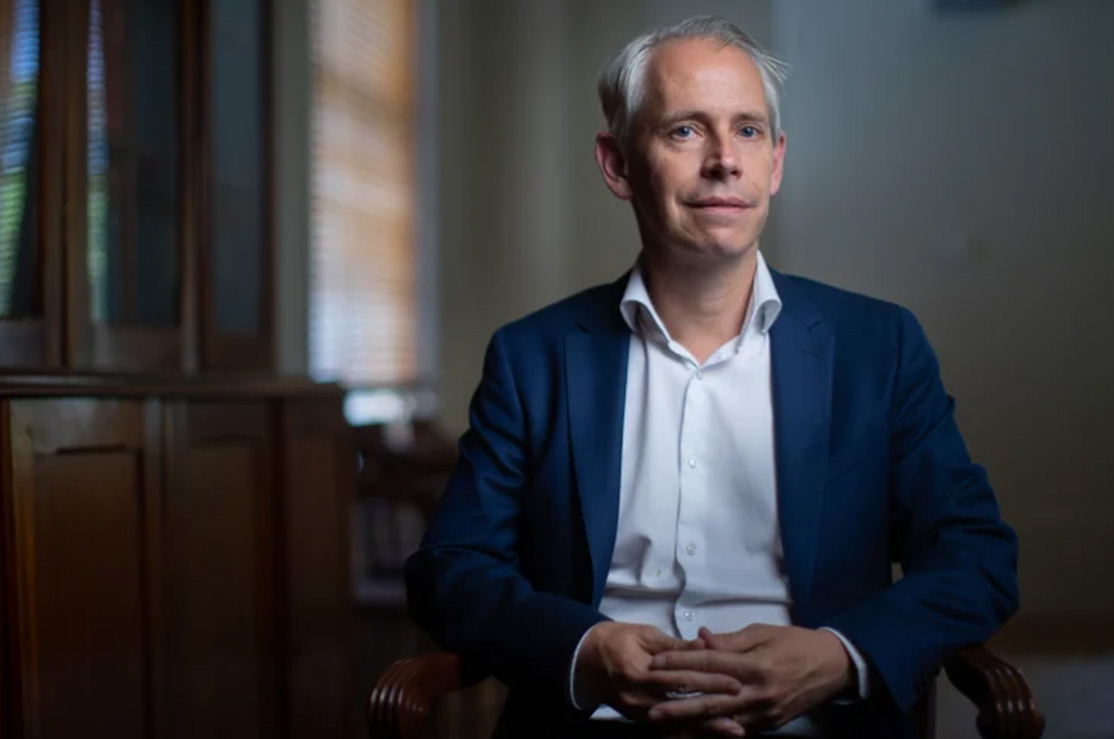
Immigration Minister Andrew Giles says skilled migrants are needed to build new homes. “One of the skill shortages that we’re experiencing is the skills we need from migrants to build the houses in Australia.”
Construction lobby Master Builders Australia has been pushing to make it easier for building and construction workers to obtain skilled visas to plug the critical shortfall in labour needed to meet the government’s ambitious housing demands.
“We need at least 480,000 new workers to enter the industry in coming years for business as usual. This number does not include the huge workforce that will need to be trained to meet the net zero transformation or housing accord goals,” MBA chief executive Denita Wawn said.
The government is overhauling the temporary migration system to lure skilled professionals away from rival nations such as Canada and the UK, while introducing several measures to refine the intake of international students and to ensure they are not exploited as a low-paid temporary workforce at the expense of their education.
The return of international students, currently at a record 664,000, has been credited with driving the surging increase in net overseas migration (deducting departures from the country in that period), which reached a record of 454,000 in the year to March.
According to former top immigration official Abul Rizvi, the number is likely to have surpassed 500,000.
The current population of 26.5 million cited by the Australian Bureau of Statistics in March is only slightly behind the almost 27 million forecast in the 2019-2020 budget for the end of 2022.
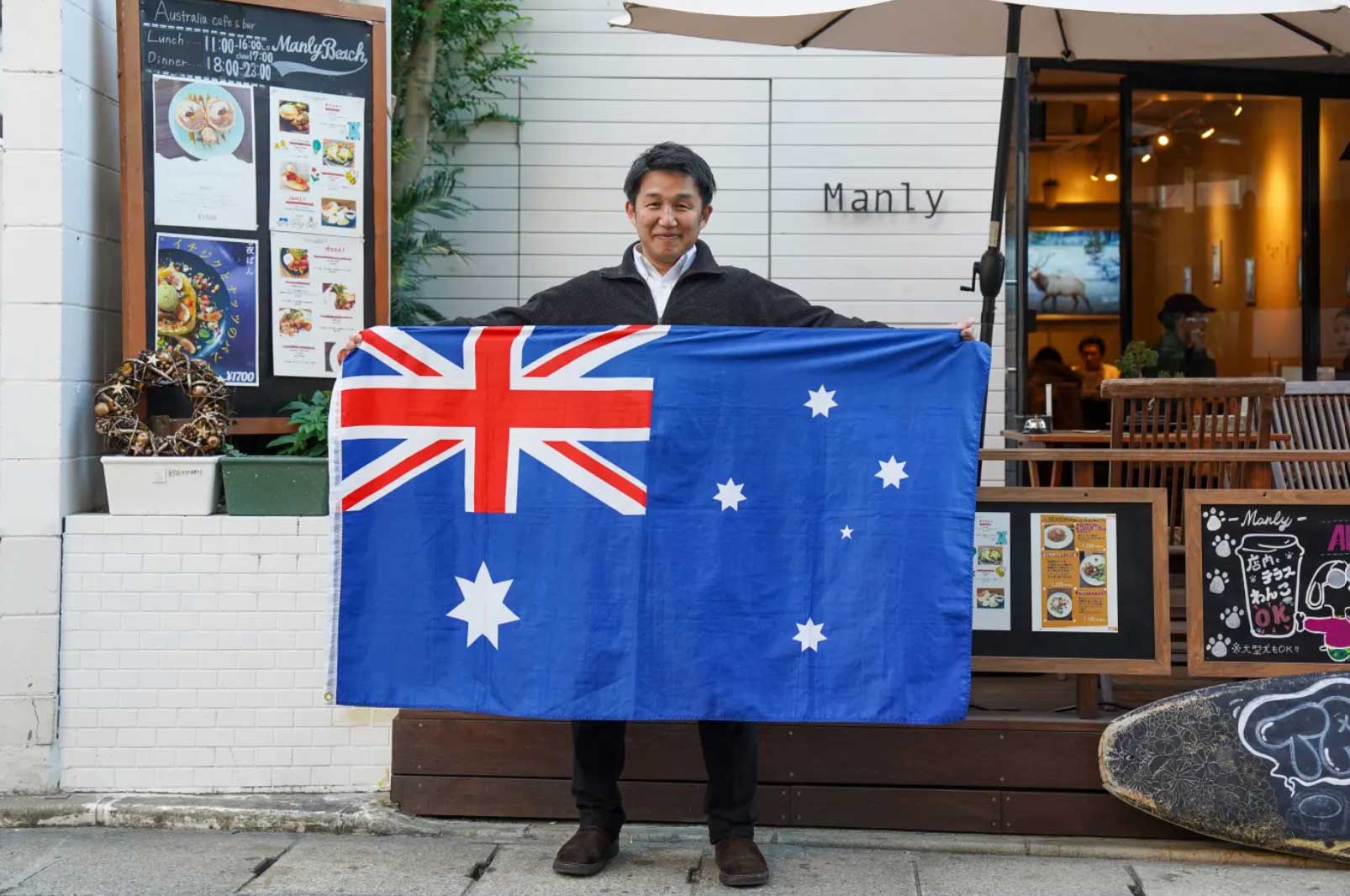
Fukuoka, Japan | Young Japanese applying to work and live in Australia have suddenly jumped to a new high this year after falling since 2016, with the numbers expected to spike again next year, adding to Australia’s record levels of migration.
Japanese workers are seeking to escape low wages, a rigid work culture and a plunging yen, which has made holidaying overseas unaffordable for many, according to Itsuro Fujita, who works as an agent for the Japan Working Holiday Association.
“When I went to Australia, the wages weren’t that attractive. Now they are the main reason for people wanting to go. The yen is so weak,” said Mr Fujita, who also runs three cafes and is passionate about all things Australia.
He describes his two years in Australia from 2009 as life-changing. But back then, he wasn’t doing it for the money.
The value of the Japanese yen against the Australian dollar was more than 50 per cent higher than it is today. Mr Fujita, who was 22 at the time, was lured by a sense of adventure and his love of the surf at Sydney’s Manly and Bondi beaches.
“Those two years in Australia were life-changing. It changed my whole perspective,” he said over a flat white coffee at his Australian-themed cafe on the Japanese island of Kyushu, where he now lives.
Australian Department of Home Affairs data shows the number of working holiday visas granted to Japanese applicants peaked at 12,304 in the 2015-16 fiscal year before dropping off significantly.
Applicants bottomed out at 1558 in 2020 when COVID-19 closed international borders, before rising to 5170 in 2022. A surge of applicants to 14,398 followed this year, which beat previous highs.
Overall, temporary migration to Australia hit historic highs of close to 500,000 in the past 12 months, as international students and backpackers returned en masse following two years of closed borders. But the record migration that has driven a sharp rise in rents may have peaked, migration experts say.
Mr Fujita expects the number from Japan, at least, to keep rising based on the inquiries he is getting.
Now 45, he is so enamoured about his time Down Under that he is trying to share his experience with an Aussie-themed cafe in the city of Fukuoka in south-western Japan. Named after Manly Beach, where he would surf regularly, Mr Fujita serves up kangaroo carpaccio, deep-fried crocodile feet and more regular Aussie staples such as Bill Granger-inspired pancakes, along with flat whites and VB.
“I wanted to create a community where people with an interest in a working holiday can come together.”
Many of his staff have worked in Australia, while this year he had a stream of Aussie customers, including Australia’s top swimmers who were in town for the world swimming championships in July.
Mr Fujita worked on a goat farm in Tasmania and in restaurants in both Manly and Bondi Beach. A surfboard sits on his cafe deck, although the nearest surf beach is a three-hour drive away.
Japanese are the fourth-biggest group in Australia on working holiday visas, behind those from Britain, Taiwan and Canada.
He says 70 per cent of Japanese applying are women aged between 26 and 28. This suggests a trend of female graduates working in a job for several years before deciding to do something different, rather than get married and have children – the traditional path in Japan.
Japan has agreements with 31 countries for working holiday visas, with Australia the most popular. However, only 1000 Australians enter Japan each year with a working holiday visa.
“We would like more Australians to come and work in Japan, but they will make less money,” he said. The Australian dollar is currently trading at around 98 Japanese yen, compared to 65 in 2009.
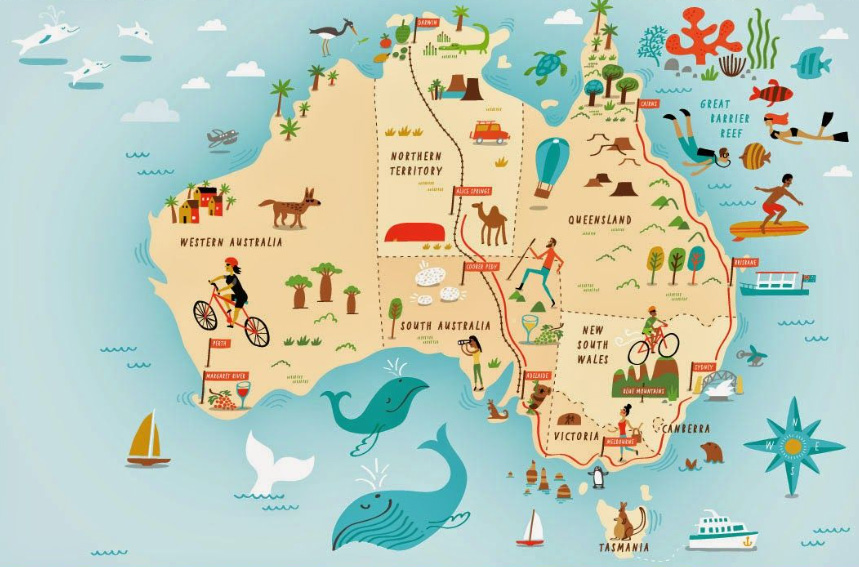
If you are interested in applying for a general skilled migration visa to Australia, it is important to have a good understanding of the skilled visa options and how the migration points test works, so that you can maximise your chances of being eligible to apply for a skilled visa.
A general skilled migration visa is an option available to skilled workers who are seeking to qualify for a skilled visa independently, or under a state or family sponsorship. It is an alternative to an employer sponsored visa.
One of the key criteria to qualify for a general skilled migration visa is the points test (a criterion that does not apply to employer sponsored visas). This is often the most challenging aspect for prospective skilled visa applicants to overcome when seeking an invitation to apply for the relevant skilled visa.
If you are considering applying for a general skilled migration program visa, an important concept to understand is the Expression Of Interest (EOI).
If you are considering applying for a general skilled migration visa, it is important to be aware that for certain visas in this visa class, you will first be required to lodge an EOI with the Department of Home Affairs (the Department) through Skill Select. The EOI is not a visa application, but rather, it is the process by which you can express your interest in applying for the relevant skilled visa (It’s important to note, that there is NO fee to submit an EOI).
This requirement applies to the following skilled visa subclasses:
Let’s take a brief look at each of these visas below:
The ‘subclass 189’ is a federal sponsored visa that grants automatic permanent residence in Australia. It is subject to nil visa conditions or obligations. For this reason, it is often considered to be the most flexible of the skilled visa options available.
A subclass 189 points-based visa allows you to live and work in any state or territory permanently.
The ‘subclass 190’ is a state/ territory sponsored permanent residence visa. It is another points-based visa for which invitations are issued throughout each month by individual states and territories. One of the benefits of applying for state nomination is that you will be granted an additional 5 points.
An important aspect to consider, which does not apply to the subclass 189 visa is that there is an added step in the application process. In this case, you must also apply for nomination approval to a state or territory government. Only upon receipt of an invitation from the relevant state or territory to which you apply can you then apply to the Department for the visa itself.
Your obligations as a subclass 190 visa holder are that you must commit to your nominating jurisdiction’s obligations and commit to residing in your nominating State or Territory for two years from visa grant.
The ‘subclass 491’ is also a points-based state/ territory (or family) sponsored visa. It is a regional visa with a term of five years. The Department issues invitations for family sponsored EOI applications only (in invitation rounds). Invitations for state sponsorship are issued by individual states and territories throughout each month. This will grant you an additional 15 points for the nomination.
Being a provisional visa, this means it provides a pathway to permanent residence in Australia with the Subclass 191 Permanent Residence (Skilled Regional) visa, subject to meeting specified requirements.
Be mindful that as a subclass 491 visa holder, you must abide by visa condition 8579, which requires you to live, work and study in a designated regional area of Australia. For migration purposes, most locations of Australia outside of major cities (Sydney, Melbourne, Brisbane, Perth, etc.) are classed as regional areas.
If your EOI is successful, you will receive an invitation to apply for the visa, as specified in the invitation letter. This then enables you to proceed with lodgment of your visa application (provided you meet all other visa lodgment and visa grant requirements).
Please note, the below State and Territory program updates is a general overview only. It does not take into account any of your personal circumstances. You must check the State/Territory information carefully to ensure you can meet all the requirements for nomination.
Australia is currently facing a shortage of skilled migrants to fill workforce demands. In response, states and territories have been easing the conditions of their visa programs to help attract skilled workers from overseas.
Below is the monthly update for some of the State and Territory opportunities available.
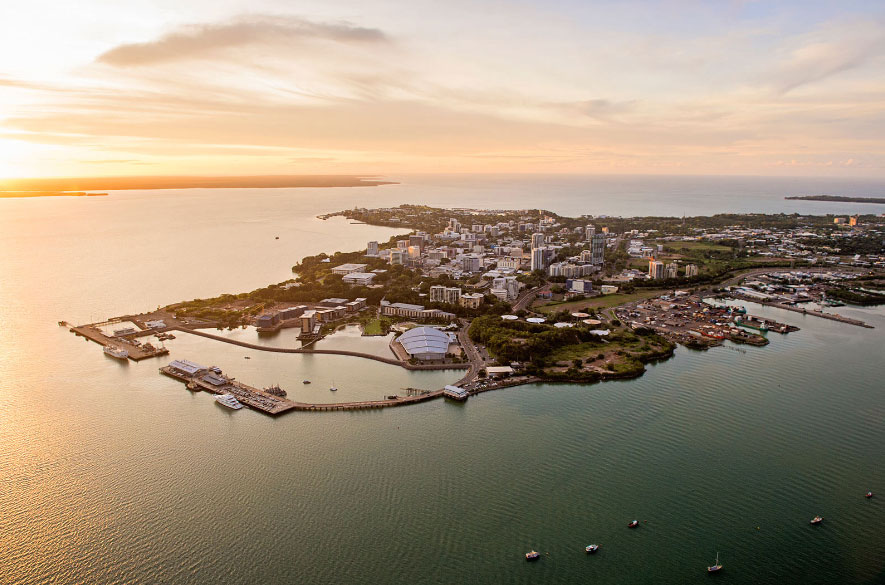
Program Status Update
UPDATE: Closure of NT General Skilled Migration (GSM) nomination applications for 2023-24
The number of NT nomination applications received under the GSM program has now exceeded the available allocations for the 2023-24 program year. (Please note, the 2023-2024 program year ends on the 30th June 2024)
Existing applications that have already been lodged through the online MigrationNT portal prior to 4th December 2023 will continue to be assessed under existing eligibility criteria, and eligible applicants will be issued nominations, subject to availability of allocations. Some eligible applications may need to be placed on hold until new allocations are received in the 2024-25 program year (commencing 1 July 2024). You will be contacted via our online portal if this applies to your application.
Once the above mentioned temporary closure is lifted, you may be able to proceed with the NT’s usual skilled migration program. Program details below:
People residing offshore are eligible to be considered for Northern Territory (NT) nomination. Invitations to apply for Northern Territory nomination will be via the ranking system.
The ‘Northern Territory Offshore Migration Occupation List’ identifies the occupations in current demand in the Northern Territory. This List is important if you want to apply for Northern Territory nomination for either a:
The ‘Northern Territory Offshore Migration Occupation List’ is only applicable for those applying for NT nomination from outside Australia, under the Priority Occupation stream.
Please note: The Northern Territory government has advised that offshore applicants will generally only be offered a Northern Territory nomination for a subclass 491 visa. Subclass 190 nominations will only be offered in exceptional circumstances, such as cases where the applicant has strong connections to the NT.
The NT advises eligible applicants to apply as soon as they meet the eligibility criteria. To receive a nomination from the NT Government, you must:
Before submitting an EOI for The Northern Territory, applicants should check that they meet all eligibility requirements.
For a further explanation, see the Frequently Asked Questions page on the Northern Territory Government website.
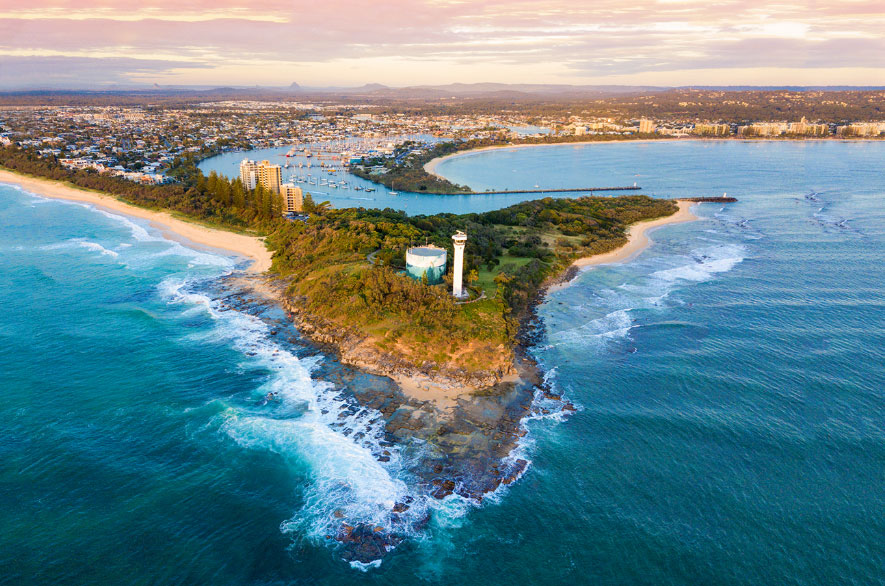
Program Status Update
To manage Queensland’s COVID recovery response, applicants currently residing offshore are now able to apply.
Depending on your occupation and situation, there are two state nomination options available for skilled migrants through Queensland.
For Queensland state nomination, prospective applicants must meet the Department of Home Affairs requirements, state-specific occupation requirements and have skills in an occupation that is available on the Queensland Skilled Occupation List.
You may undertake employment once onshore in Queensland through:
Offshore applicants meeting the minimum published requirements are eligible to lodge an Expression of Interest (EOI).
NOTE: The 2023 – 24 program opened on 5 September 2023. Migration Queensland will only consider EOIs lodged on or after 5 September 2023 – updated EOIs will not be considered.
Migration Queensland criteria requires you to:
The agency also requests all applicants to ensure they have carefully read and understood the new criteria relevant to their stream or pathway, and that they meet the criteria before submitting an Expression of Interest (EOI).
The 2023-24 Skilled Migration Program will be open to both onshore and offshore applicants and provide pathways for skilled workers, graduates, and small business owners.
Before submitting an EOI for Queensland, applicants should check that they meet all eligibility requirements.
For a further explanation, see the Frequently Asked Questions page on the Queensland Government website.
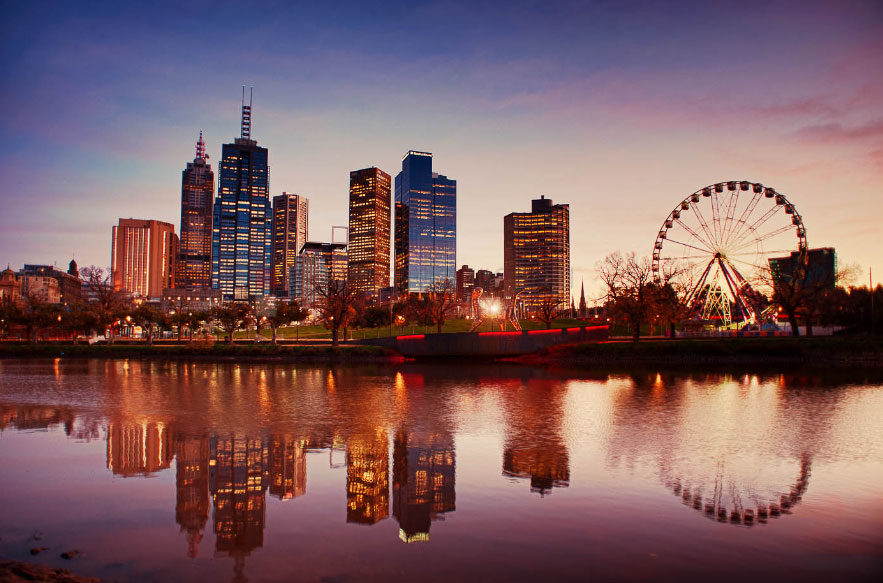
Program Status Update
Open to offshore applicants, the program provides skilled migrants with a pathway to permanent residency in Victoria. The skills that successful applicants bring to Victoria benefits employers and the broader Victorian economy.
The program provides two visa pathways:
As with previous years, applicants will first need to submit a Registration of Interest (ROI) and then be selected on competitive merit to apply for visa nomination.
NOTE: If you submitted a subclass 491 ROI for the 2022-23 program, you must submit a new ROI for the 2023-24 program.
If you submitted a subclass 190 ROI for the 2022-23 program, you do not need to submit a new ROI for the 2023-24 program. You should ensure that all information in your ROI is still correct.
Both onshore and offshore applicants are eligible to submit a Registration of Interest (ROI) for both the subclass 190 and subclass 491 visas.
Your ROI will remain in the system for selection until it is withdrawn, selected or the program year ends.
Before submitting an ROI for Victoria, applicants should check that they meet all eligibility requirements.
For a further explanation, see the Frequently Asked Questions page on the Victoria Government website.
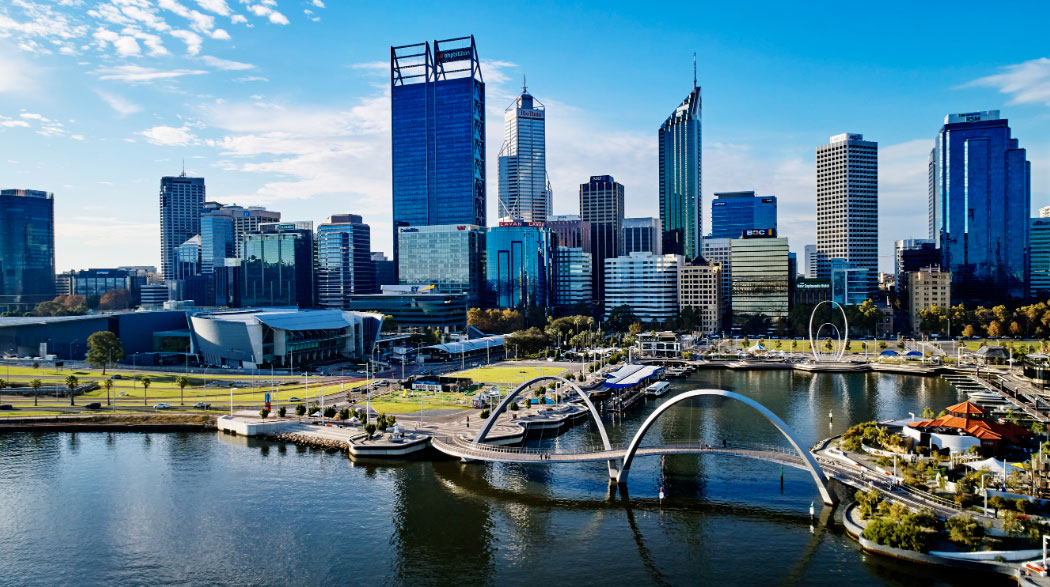
Program Status Update
UPDATE: Closure of the WA State Nominated Migration Program applications for financial year 2023-24
The number of WA applications received under the State Nominated Migration Program (SNMP) has now exceeded the available allocations for the 2023-24 program year (1st July 2023 – 30th June 2024).
WA Migration Services will stop accepting new SNMP applications from close of business on 2 February 2024.
Existing applications that have already been lodged prior to this time will continue to be assessed under existing eligibility criteria, and eligible applicants will be issued nominations (subject to availability of allocations).
Some eligible applications lodged prior to the program closure date will not be considered as part of the 2023-24 program year. Applicants will be contacted if this applies to their application.
Once the above mentioned temporary closure is lifted, you may be able to proceed with the WA’s usual skilled migration program. Program details below:
People residing offshore are eligible to be considered for Western Australia (WA) State nomination. Invitations to apply for WA State nomination will be via the ranking system.
The Western Australian Skilled Migration Occupation List identifies the occupations in current demand in Western Australia. This List is important if you want to apply for Western Australia nomination for either a:
Please note that to be eligible for an invitation in the WA State Nominated Migration Program, you must meet both:
Before starting your application, you will need to check whether your occupation is available on either the WA Skilled migration occupation list (WASMOL) Schedule 1 or 2, or the Graduate occupation list. You can search for your occupation here. (The occupation list search bar is located under the heading ‘Eligible Occupations’.)
Features of the WA 2023-24 State Nominated Migration Program:
Before submitting an EOI for Western Australia, applicants should check that they meet all eligibility requirements.
For a further explanation, see the Frequently Asked Questions page on the Western Australia Government website.
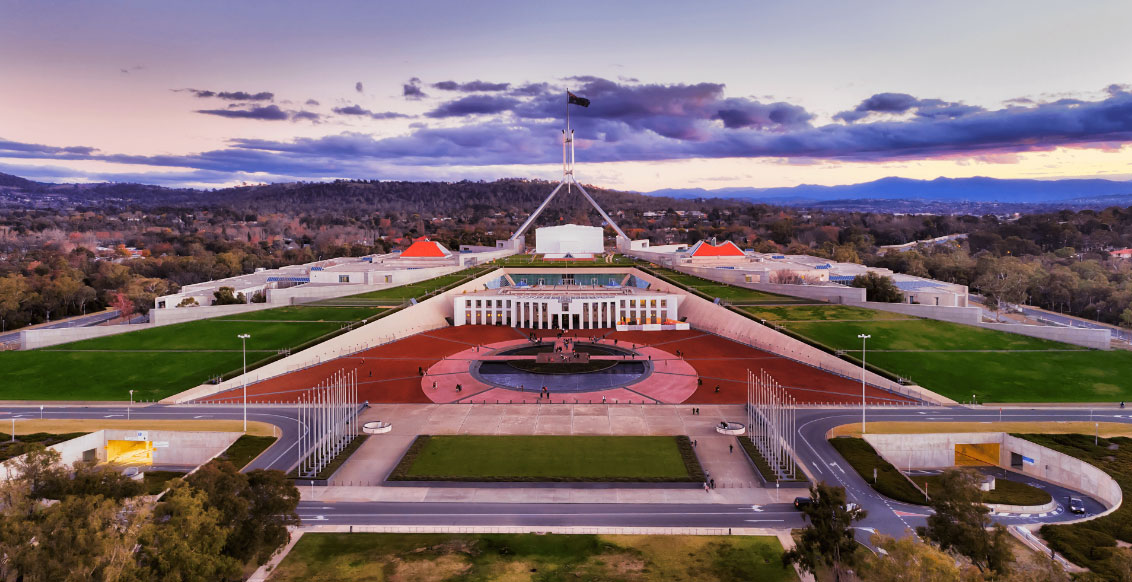
Program Status Update
The ACT Critical Skills List identifies the occupations in current demand in the ACT. This List is important if you want to apply for ACT nomination for either a:
The ACT Government will update this list every four months to make sure that the ACT Skilled Migration Program adapts and responds to the evolving critical skills needs of the ACT economy.
The Canberra Matrix is weighted to ensure that applicants who will make a positive economic contribution to the Territory and/or have demonstrated a genuine commitment to the ACT are more likely to be ranked and invited to apply for ACT nomination.
*ACT nomination does not guarantee a migration outcome. You must still meet the Department of Home Affairs criteria.
Every month, a certain number of nomination invitations are available (prorated on the annual allocation) to those working in the highest ranked Matrix in each occupation.
You can view the ACT’s most in-demand skills for skilled migration by consulting the ACT Critical Skills List.
Before submitting an EOI for The Australian Capital Territory, applicants should check that they meet all eligibility requirements.
Once you’ve submitted a valid Department of Home Affairs Skill Select EOI, follow the ACT Government Process to apply for ACT nomination.
For a further explanation, see the Resources page on the ACT Government website.
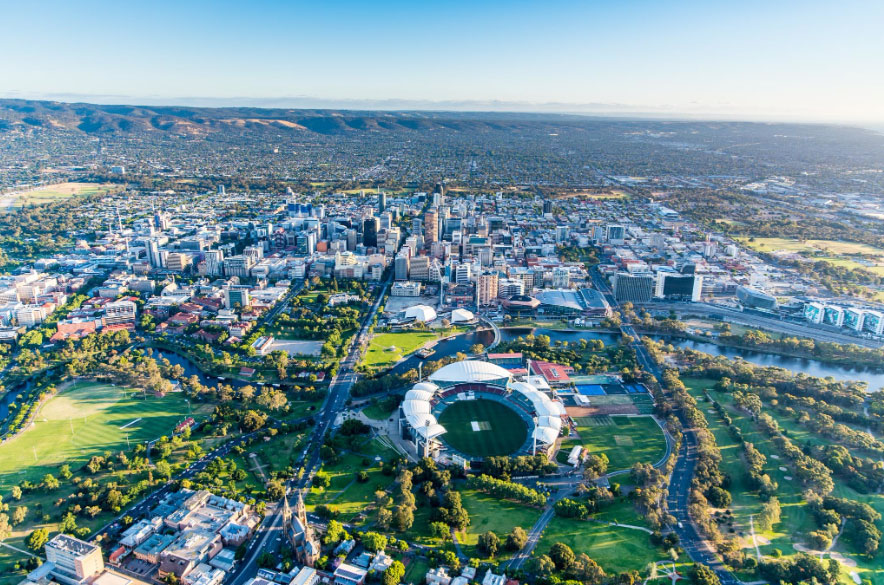
Program Status Update
To manage South Australia’s COVID recovery response, applicants currently residing offshore are able to apply.
Depending on your occupation and situation, there are two state nomination options available for skilled migrants through South Australia.
For South Australian state nomination, prospective applicants must meet the Department of Home Affairs requirements, state-specific occupation requirements and have skills in an occupation that is available on the South Australian Skilled Occupation List. Offshore applicants meeting the minimum published requirements can now lodge an Expression of Interest (EOI).
There is an enormous range of occupations on South Australia’s Skilled Migration Occupation List in a range of industries – search for your occupation here.
South Australia will select offshore applicants to apply for state nomination from those who have submitted an Expression of Interest (EOI) through SkillSelect. Offshore applicants will not need to lodge a Registration of Interest (ROI) for this year’s program. South Australia will be nominating offshore applicants from over 250 occupations on South Australia’s Skilled Migration Occupation List. To be eligible, ensure all the information in your SkillSelect EOI is up to date and you have selected South Australia as your first preferred state or territory to move to in Australia.
South Australia will be assessing candidates on merit by the following factors, within their nominated occupation:
Before submitting an EOI for South Australia, applicants should check that they meet all eligibility requirements.
For a further explanation, see the Frequently Asked Questions page on the South Australia Government website.
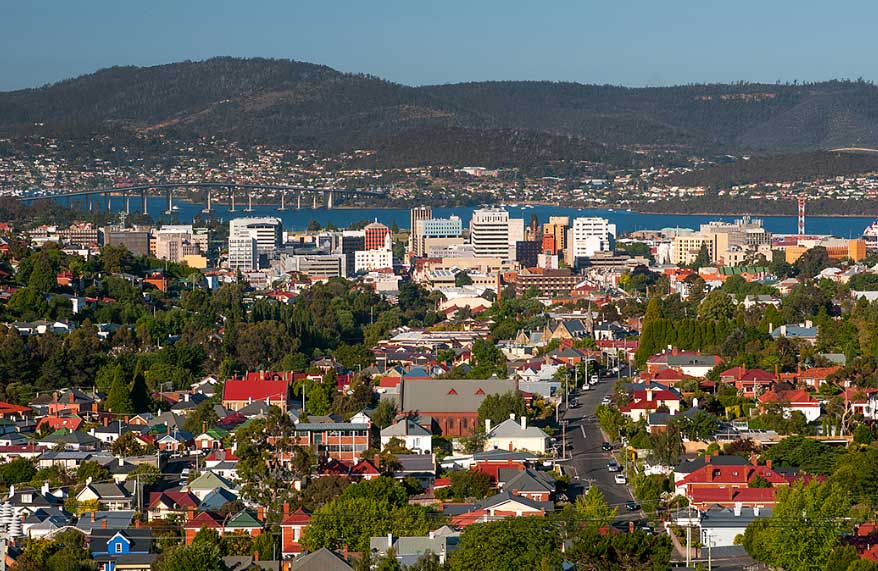
Program Status Update
Working in Tasmania
The two state nomination options available for skilled migrants through Tasmania are:
The Tasmanian State Nomination Skilled Migration Program supports Tasmanian businesses and increases the state’s working age population. It does this by attracting and retaining migrants with skills genuinely in need by employers, or with the capacity to settle in Tasmania through skilled employment in the long-term, and business activities that will increase employment opportunities.
Tasmania’s skilled migration program is for people wanting to move to the state who have skills that Tasmania need. Skilled migrants are attracted to Tasmania because of the state’s enviable lifestyle, career opportunities, affordable housing, reputable schools and a globally recognized university.
The Migration Tasmania Application Gateway is now available for registrations of interest (ROI) and applications for skilled visa nomination from Tasmania.
Anyone seeking Tasmanian nomination for a Subclass 190 Skilled Nominated Visa or Subclass 491 Skilled Work Regional Visa must first register in the Migration Tasmania Application Gateway .
Before submitting an ROI for Tasmania, applicants should check that they meet all eligibility requirements for either;
ROIs submitted before 1 July 2023 will remain valid for the 2023-24 program year.
ROIs and applications submitted from 5 July 2023 fall under the new eligibility requirements.
In cases where new requirements are likely to be beneficial, candidates may wish to withdraw their current ROI and submit a new one. (There is no charge to submit a Registration of Interest)
For a further explanation, see the Frequently Asked Questions page on the Tasmania Government website.
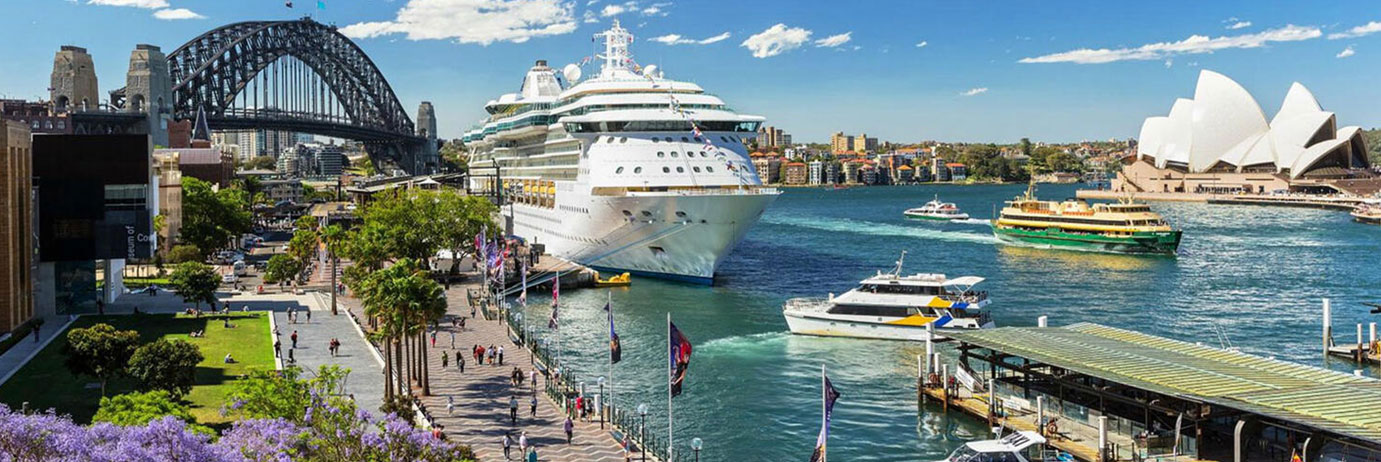
Program Status Update
The New South Wales government has invited applications from offshore migrants under the following nomination streams:
The NSW State Government announced that offshore applicants skilled in certain ANZSCO unit groups are still eligible for NSW nomination.
*Please note: Invitation rounds occur frequently throughout the financial year with no set date.
NSW invites and nominates SkillSelect EOIs at the ANZSCO unit group level. To be eligible for NSW nomination (for either Subclass 190 or Subclass 491) you must be skilled in an occupation that both:
It is important to note that not all occupations within ANZSCO unit groups are eligible for the respective visa. It is the responsibility of the prospective migrant to ensure their occupation is eligible for the visa before obtaining a skills assessment.
Your EOI must be exclusively for the ‘Skilled Nominated visa (Subclass 190)’ or ‘Skilled Work Regional visa (subclass491)’ and seeking nomination from NSW only.
This means that if your Skillselect EOI has multiple visas and/or multiple states selected (this includes selecting ‘ANY’), your Skillselect EOI will not be considered for NSW nomination.
What are the NSW target sectors?
The NSW target sectors are specific industry sectors that have been identified by data research as having critical skills shortages in NSW. They include:
Although all validly submitted SkillSelect EOIs will be considered during an invitation round, priority is given to EOIs in these target sectors.
Is my occupation within a NSW target sector?
The NSW government cannot confirm whether individual occupations fall within NSW’s target sectors. So long as you maintain a validly submitted EOI in SkillSelect, your EOI will be considered in all future NSW invitation rounds.
Will NSW invite EOI’s in occupations outside of the NSW target sectors?
High-ranking EOIs in occupations outside of the NSW target sectors may be considered during invitation rounds; however, it’s crucial to understand that the odds of receiving an invitation are exceptionally low due to high demand and limited spots.
Before submitting an EOI for New South Wales, applicants should check that they meet all eligibility requirements for either;
For a further explanation of how the skills list works, see the Common questions about skilled visas page on the NSW Government website.

Business leaders are again praising Australia’s migration intake, with the country set to rely on large numbers of foreign workers if it is to have a chance of filling 880,000 roles in industries including health, housing, engineering, technology, teaching and more…
The technology sector faces chronic shortages and says if federal Labor can come close to meeting its own target of 1.2 million tech workers, more than 160,000 overseas candidates are needed per year.
Other key industries have tens of thousands of shortages as well, including in engineering, construction, medicine, teaching, aged care, etc.
Tech Council of Australia president Kate Pounder said federal Labor’s 1.2 million tech jobs target for 2030 meant an additional 43,000 skilled migrants were needed above current rates of 119,000 per year.
“It’s high-wage, high-skill, globally in demand people, in critical jobs across the economy,” she said.
Engineers Australia group executive Damian Ogden said that by 2040, Australia was expected to have a shortage of 200,000 engineers, potentially undermining infrastructure and construction projects and sapping economic growth.
More than 60 per cent of the profession is overseas born, and Infrastructure Australia estimates more than 40,000 additional engineers are needed to meet the country’s infrastructure pipeline.
“We need to consider how we manage the pipeline of engineers in Australia more effectively to ensure we strike the right balance of migrant engineers to meet the demand while also developing our talent locally,” he said.
“Migrant engineers in Australia need to be valued for the experience they bring.”
Already 36 per cent of occupations have experienced worker shortages in the past year, including acute shortages in health, construction, technology and infrastructure.
Since January 2022, more than 27,000 internationally trained medical practitioners have been registered to work in Australia. Before the pandemic, about 18 per cent of all registered nurses and 32 per cent of medical practitioners were overseas trained.
Australian Medical Association vice president Danielle McMullen said overseas-trained doctors were often the bulk of the workforce in regional areas.
“We certainly have challenges in distribution of our locally trained workforce,” she said.
Housing Industry Association chief executive for industry and policy Simon Croft said there were acute shortages in the building trades.
“This skill shortage will only become more acute as part of the industry building the 1.2 million homes as outlined in the National Housing Accord Commitment and emphasises the need for a well-designed and targeted skilled migration program to assist in building these much-needed homes.”
The National Electrical and Communications Association said Jobs and Skills Australia modelling showed 32,000 additional electricians would be needed in the next seven years, as well as about 53,000 new clean energy supply workers.
Hotels and hospitality groups say there are more than 80,000 vacancies in their industry, including 20,000 barista positions, 11,000 for bartenders and 10,000 for kitchen hands.
Other industries have strong demand as well.
“HIA sees value in the creation of stable migration settings that allow industry, government and most importantly, potential migrants, to clearly understand the opportunities both temporary and permanent migration to Australia can bring.”

The number of early childhood education and care (ECEC) educator job postings listed online reached a new record monthly high, its fifth consecutive one, according to data released by Jobs and Skills Australia.
A total of 5,225 listings for educator roles were recorded, around 14 per cent higher than the same period last year and a substantial 45 per cent higher than two years ago.
The surge reflects not only seasonal factors but also the structural, and well documented challenges, of educator supply being unable to meet the demand.
Across the states and territories all jurisdictions with the exception of Victoria and the ACT saw increases in job listings reflecting the broad nature of current supply shortages for educators across the country.
The centre manager data series is less confronting with a substantial seasonal pull back taking place for the second year running but what is notable is that the current number of listings, even after the seasonal fall, remains well above that recorded in the same period of last year.
A further notable data point in the Jobs and Skills Australia job listing data is the recent history of the aged care sector which, unlike the ECEC space, was the beneficiary of a 15 per cent increase in wages implemented in July 2023 but agreed to back in September 2022.
As was pointed out by John Cherry, Advocacy Manager at Goodstart Early Learning in a recent social media post the number of aged care worker listings has moderated a great deal from the highs recorded at the time of the announcement whereas listings for ECEC workers, who have not benefited yet from a pay increase, has continued to climb.
Looking ahead to 2024 an announcement on the outcome of extensive wave negotiations between employee and employer representatives is due with an expectation generally that a funded wage increase will be forthcoming.
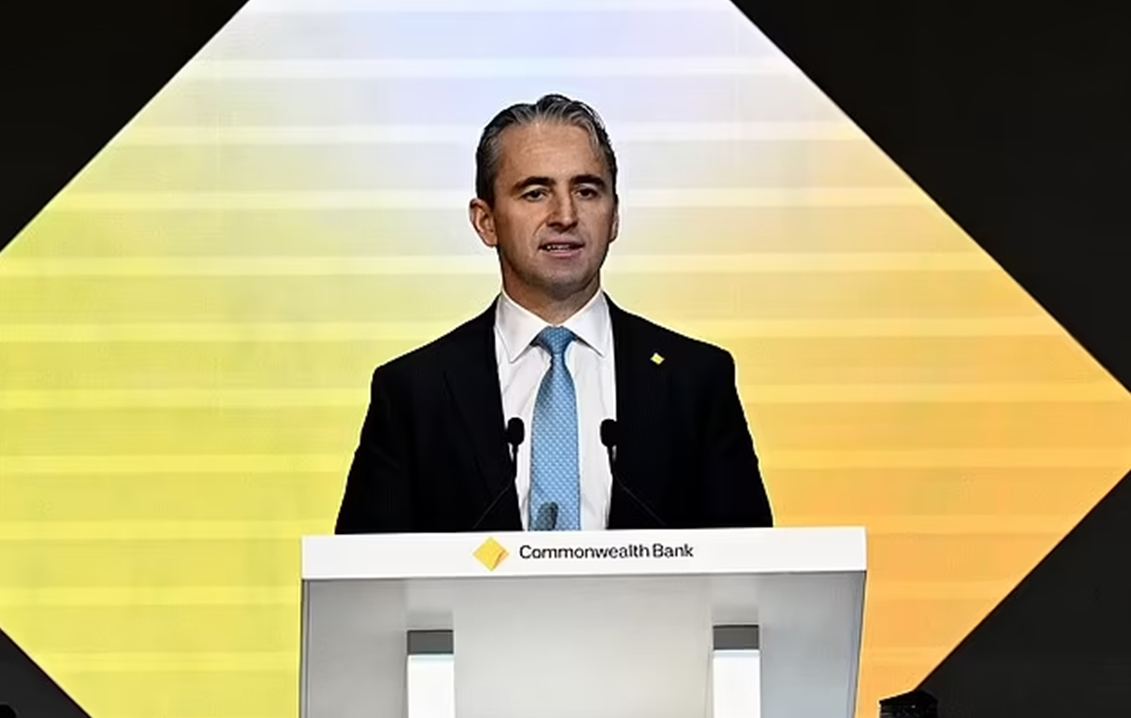
The Commonwealth Bank’s chief executive Matt Comyn has praised record-high immigration. ‘Undoubtedly, the strong population growth and migration growth is a big tailwind for the Australian economy and clearly the Commonwealth Bank is a beneficiary of higher economic growth,’ Mr Comyn said.
A record 680,000 migrants moved to Australia last calendar year. The record population growth has stopped Australia falling into a recession but the economy has been in a per capita recession since early 2023 where output per worker is shrinking. Falling output can make inflation worse because it means companies have to pass on the costs to consumers to make a profit, leading to higher prices for goods and services.
Reserve Bank Governor Michele Bullock admitted she didn’t know why Australian productivity was falling as it rebounded in the United States. ‘They’re the outlier – everyone else is like us,’ she told the Senate economics committee. ‘I don’t think we know specifically what the difference is. ‘One thing I would observe is our growth in our labour force has been much stronger.’
Mr Comyn told analysts the Commonwealth Bank would be happy to finance affordable housing projects. ‘Also, trying to bring in or contribute more capital into the development of some of the social and affordable housing,’ he said.
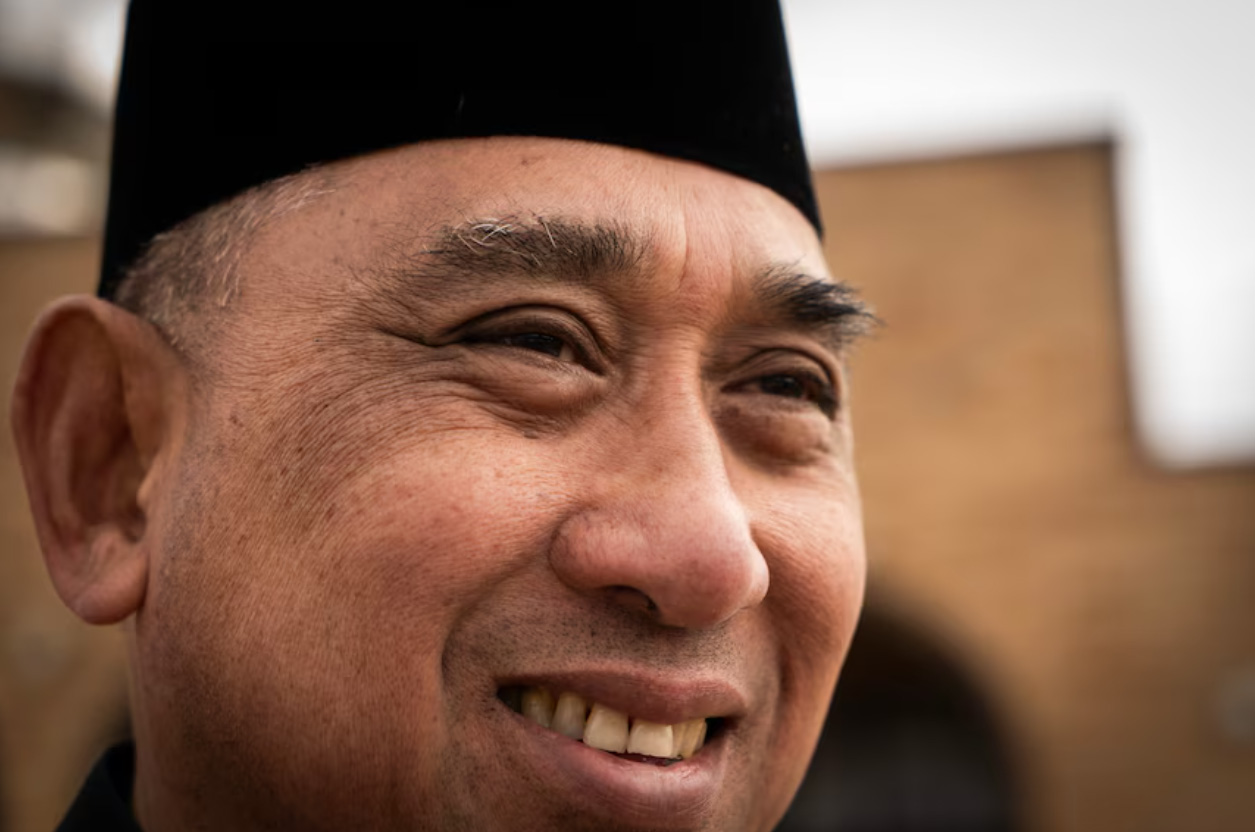
In a sheep-farming town in rural Western Australia lies a long line of flags.
Katanning, 300 kilometres south-east of Perth, challenges the traditional stereotypes often seen in many country settlements and is considered one of the most diverse pockets in the state.
According to the Katanning Shire, the area of about 4,000 people includes 50 language groups.
And about one quarter of the population had both parents born overseas.
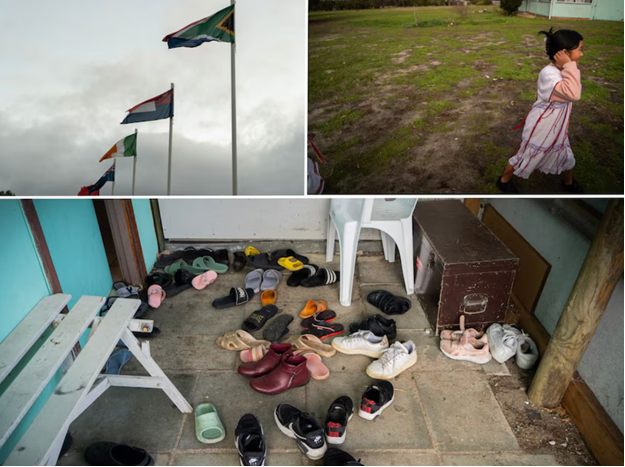
Malay, Karen, Burmese, Hazaraghi and Afrikaans are the most common languages spoken at home other than English, according to the Australian Bureau of Statistics.
Some of the people who call Katanning home are refugees who have fled war zones.
Others have sought employment opportunities in primary industries and have stayed to raise a family in one of the more affordable locations in WA.
Among the colourful characters in the town is Imam Alep Mydie.
He says the secret to a diverse group of people living in harmony is everyone contributing to the community and respecting one another.
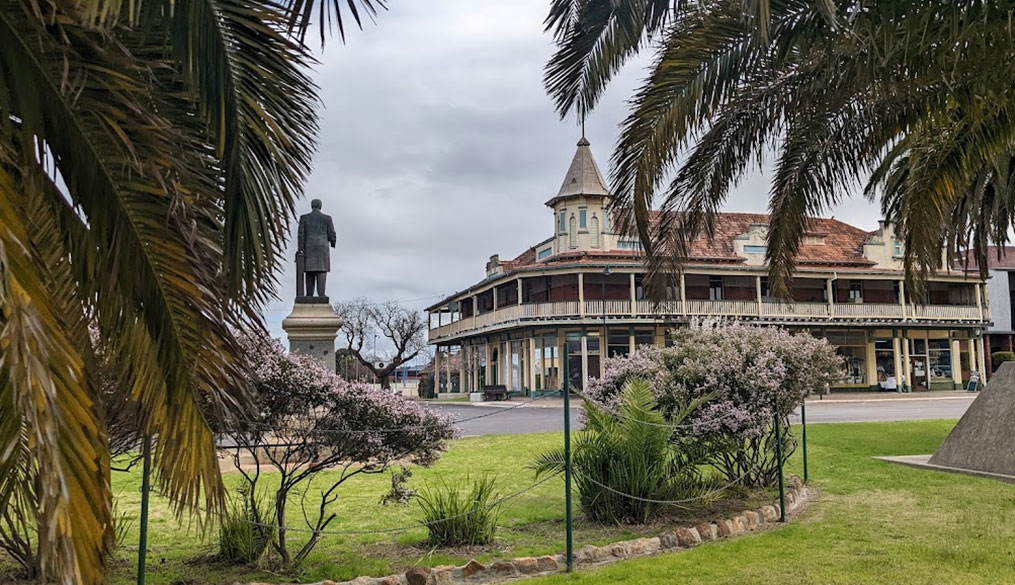
Friendly smile
Alep looks up from his kitchen and greets his customers with a warm smile.
His restaurant sits on the main street of town and has a steady stream of people seeking coffee and curry puffs.
“My cafe is my office, we drink coffee each day, maybe two, three, four, five or six times a day and every time a friend comes in for a chat, another coffee again so I have to go home early, or I’ll put on weight,” Alep joked.
He was born on Christmas Island and moved to the quiet town with his parents in 1974.
“The meatworks needed workers to come here, and the islanders were looking for a job … so it married them together and here we are after 50 years,” he said.
Alep said many of the original workers brought in decades ago had retired and with that came a new wave of migration, with people from places ranging from the Pacific Islands to Afghanistan.
“You have Tongan, Solomon Islands, Fijian, people from Malaysia, Indonesia, people from Singapore, Taiwan, China, Europeans and a few other places,” he said.
He said so many diverse perspectives had brought a positive outlook to Katanning.
“It’s a very tolerant place where people can live happily in the most harmonious way,” he said.
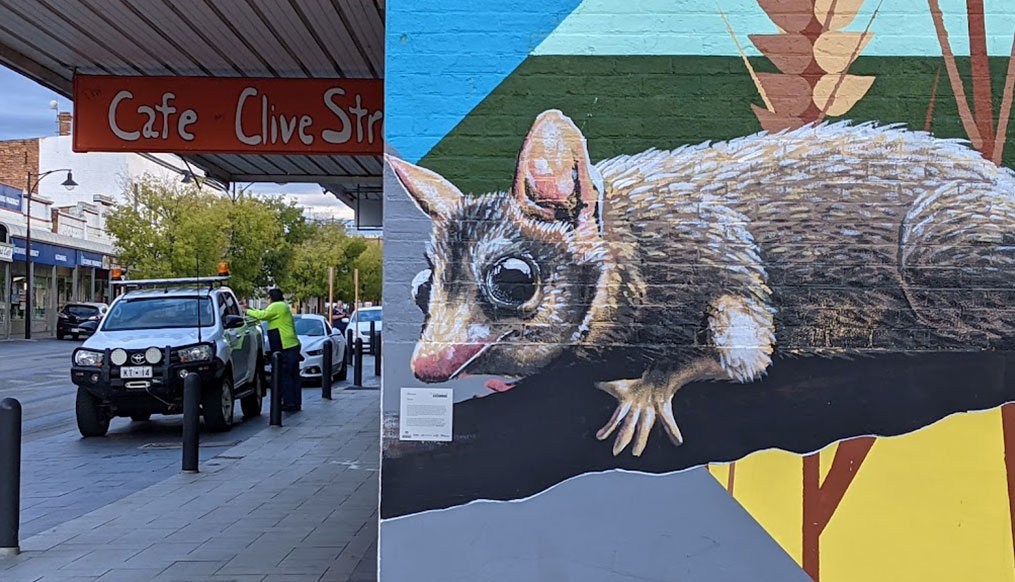
Hesitation at first
When Alep isn’t in his restaurant, he can be found at the local mosque where he is an imam or Islamic leader.
“When we first arrived here people had a lot of doubt, people were unsure and fearful, it’s a fear of what are these people doing here,” he said.
“But as time and years went by, they understood we’re just another group of people just like the Italians and the Greeks that came before us.”
Alep said multiculturalism was very common in big cities but believed the diverse structure in Katanning was unique for a country town.
He said people in the town were accepting of different religions and nationalities.
“That’s why people are willing to come here,” he said.
Asked what the secret was to living in harmony, Alep said it was simply to respect one another – and joked that barracking for a good football team like the Eagles also helped.
Another resident, Superwan Thomas, said she too loved being part of the Katanning community.
Superwan moved to WA from Thailand 16 years ago.
She runs a restaurant incorporating “Thai and Aussie” food.
“I love the people, [it’s why] I’ve lived a long time here,” she said.
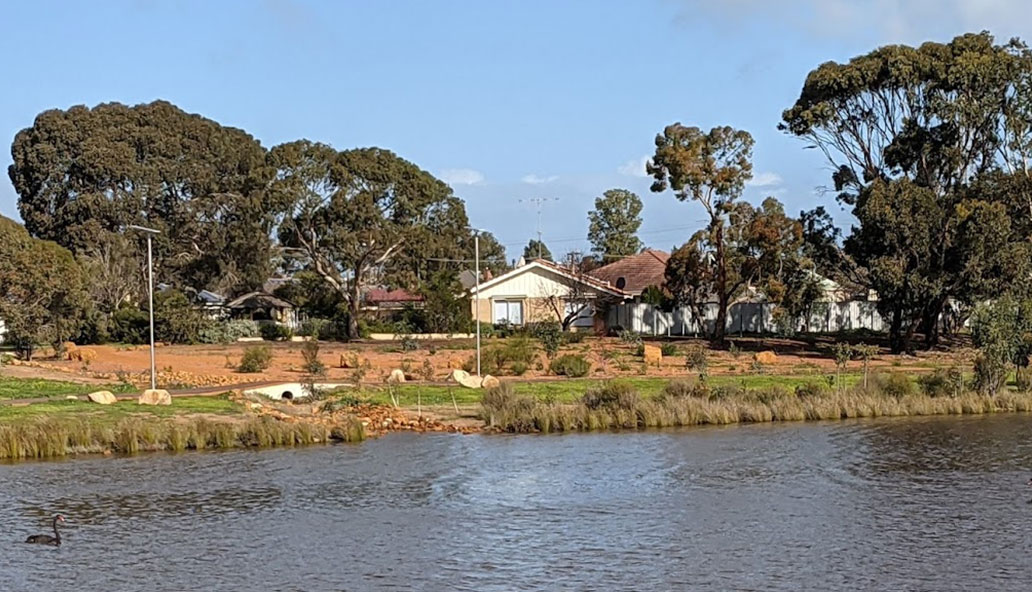
Harmony Festival
As Harmony Week approaches and Katanning gets ready to hold its annual Harmony Festival, Alep had a message to people who may be afraid of diversity and things that are different.
“Come and visit, don’t judge by the cover of the book, come and see for yourself and feel and talk to people,” he said.
“Don’t judge quickly, sense it, feel it, this is Katanning, I love it.”

The Government has replaced the Genuine Temporary Entrant (GTE) requirement for student visas with a Genuine Student (GS) requirement. This is effective for student visa applications lodged on and after 23 March 2024.
This requirement does NOT apply to student visa applications lodged before 23 March 2024. These applications will continue to be assessed against the pre-existing GTE requirement.
All applicants for a student visa must be a genuine applicant for entry. They must stay as a student and be able to show an understanding that studying in Australia is the primary reason of their student visa. The GS requirement is intended to include students who, after studying in Australia, develop skills Australia needs and who then go on to apply for permanent residence.
To be granted a student visa, all applicants must demonstrate they satisfy the genuine student criterion or the genuine student dependent criterion.
According to the update, the three key points are:
The changes include:
The 300 word statement in the Student visa application form will be replaced with targeted questions. These questions will provide visa decision makers with an overview of the applicant and their reasons for wanting to study in Australia, to contextualise the documentary evidence applicants must provide in support of their application.
The intended questions will cover:
Details of their current circumstances, including ties to family, community, employment and economic circumstances;
The Student visa declaration will be amended to require applicants to confirm that they:
The update indicated “Ministerial Direction No. 69 will be revoked and replaced by two new ministerial directions, which will reflect the intention for the GS requirement to apply after the intended commencement date of 23 March 2024; and then to ensure that applications onhand, and not yet decided, before the commencement date of 23 March 2024 have the GTE assessment applied to those cases.”
Phil Honeywood, CEO of the International Education Association of Australia says “On the one hand, the Department at least sort stakeholder input via a special working group. On the other hand, the implementation date of 23 March, 2024 is causing a lot of concern for providers and education agents.
The sector has anticipated a much greater lead time and is concerned this imminent implementation date will lead to students not understanding the new system and will potentially lead to applications being compromised. Education providers are now going to have to quickly adjust their systems and processes with regards to application screening to ensure students meet this sudden new timeline.”
Robert Parsonson from the International Student Education Association of Australia has indicated he has received significant feedback from his membership. These comments include:
“The same as GTE BUT with additional focus on “REAL” value of the course and its skill level to the student and his/her academic and professional history. So essentially more work and very client focused.”
“So far, it seems to be the same thing as the GTE, just a different way of presenting the arguments. And I believe we would have and should, in many cases, include an explanatory letter for context beyond answering the questions in the application itself.”
Ravi Lochan Singh, CEO of Global Reach education agency, a major agent supporting students from the sub-continent, is less concerned about the short implementation but says, “In my opinion, It is very similar to GTE that was there except for two questions. The questions being: for applicants with a study history in Australia, details of their study history; and for applicants holding a visa other than a Student visa, their reasons for applying for a Student visa. They are obviously targeting onshore movements but am not sure if GTE criterion is actually getting replaced by simply saying so.”
“However abolishing the requirement of SOP (statement of purpose) is a significant change. Now the directed questions will figure in the application form and this is good. The questions may still need to be well answered.”
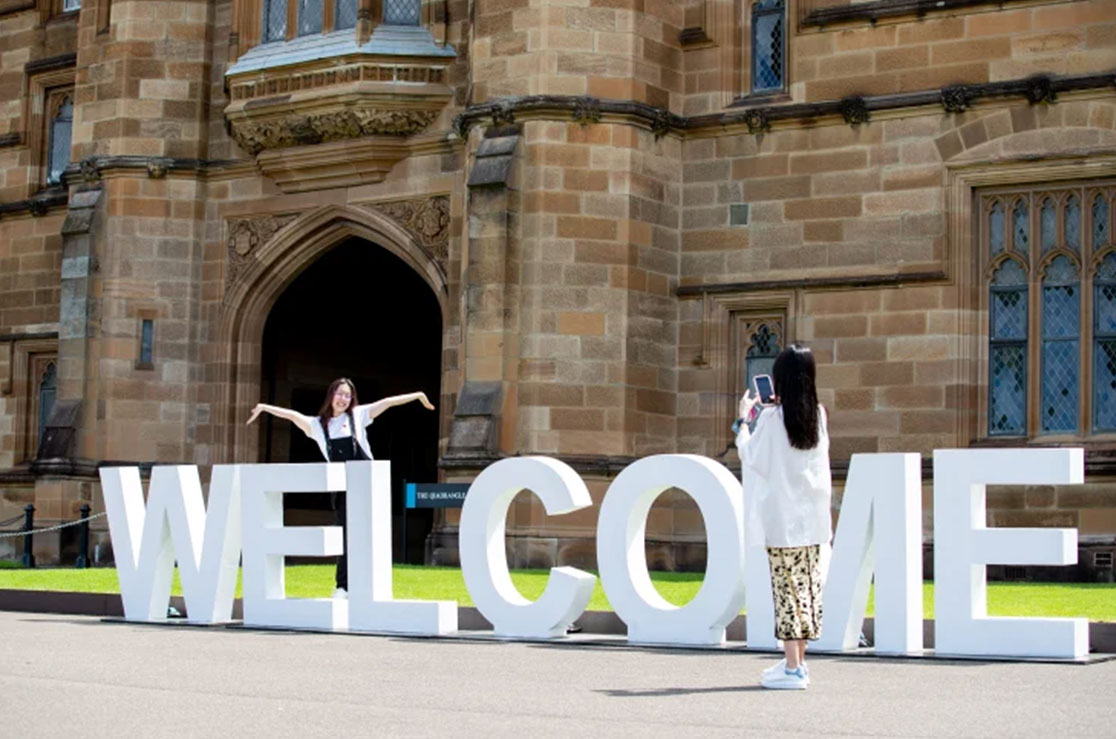
A key executive at one of Australia’s most prestigious universities has questioned whether the federal government is imposing a student migration cap by stealth in its dramatic slashing of visa approvals.
Australian National University’s associate director of international intakes Brendon Lutwyche said there would be a huge outcry if the mining sector was dealt a similar hit to that of tertiary institutions. His self-described “political” social media statement drew broad applause.
Australia’s top universities until recently have been broadly supportive of Labor’s crackdown but now are complaining that the approach of Home Affairs is creating chaos throughout the sectors.
Lutwyche said the chaos meant genuine international students were not having visas approved in time to attend orientation, and questioned whether the department was under-resourced.
On a LinkedIn post last week, Lutwyche said: “Or is it a student migration cap by stealth as some commentators are suggesting? Only the government can respond – but can you imagine the outcry if the Gov. suddenly told Rio Tinto their three iron ore carriers berthed in Gladstone port wouldn’t be able to depart with their product? There would be a huge (and justifiable) outcry.
In response, the University of Sydney’s international director Tim Field wrote his institution’s students were also in limbo due to processing delays.
“The rhetoric has been that ‘the system’ was to crackdown on the dodgy providers and to reduce ‘exploitation and rorting in higher education’,” Field wrote, “but … it’s just chaos that is impacting genuine students who’ve committed to Australia as their future study destination.”
Macquarie University’s international director David Harrison said genuine international students would suffer an “unjust black mark on their future”. Charles Sturt University’s head of international student recruitment, Mike Ferguson, accused the government of an unsophisticated, “drunken sailor” approach to visa policy.
Group of Eight chief executive Vicki Thomson said the top-tier universities were concerned about significant visa processing delays. “We have raised this issue with the government and are working with them to find a solution,” Thomson said.
Home Affairs Minister Clare O’Neil was asked for comment. Last week, she said the government’s goal of returning student migration to pre-pandemic levels was clear, “and applying proper integrity to student visa applications is critical to doing that”.
“Change is hard, and we’ll work with providers to help them navigate the new system,” she said.
Her comments followed a letter endorsed by vice chancellors of 16 universities, including Victoria University, Federation University, Western Sydney University and the University of Wollongong, warning of a $310 million blow to their revenue under the new visa restrictions.
The government has announced a suite of measures, including stricter English language testing and financial requirements for students, and fines of nearly $1 million for fraudulent training providers, to boost the quality of students and stop them using education as a back door for low-paid work.
Asked in December whether the government would resort to capping student numbers, O’Neil did not rule this out. She said she was “confident that the measures we have put together here are being done quickly and that we’ve caught this problem in time”.
At issue now is the application of O’Neil’s ministerial direction to departmental staff in December to prioritise processing visa applications for institutions with the least risk. Institutions complained delays were being felt across the board.
Global Reach education agency director Ravi Singh said he’d rarely seen non-political entities such as universities coming out so clearly against the government.

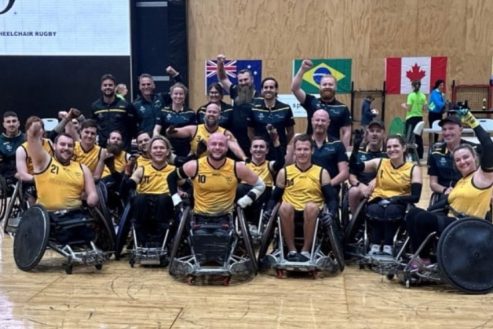

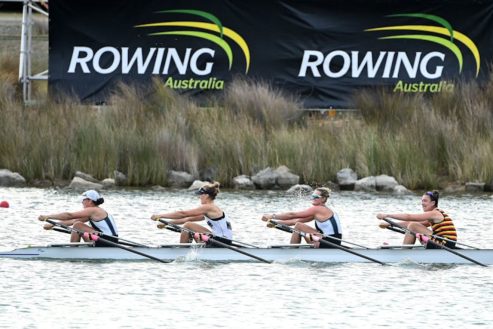

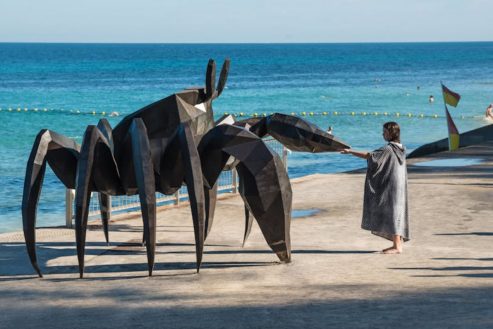
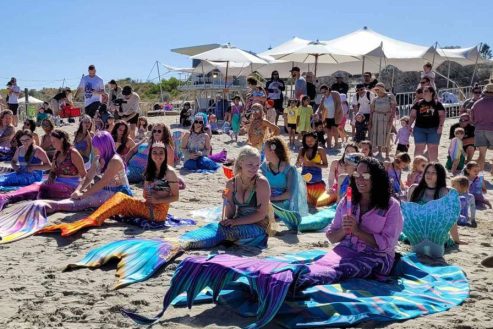
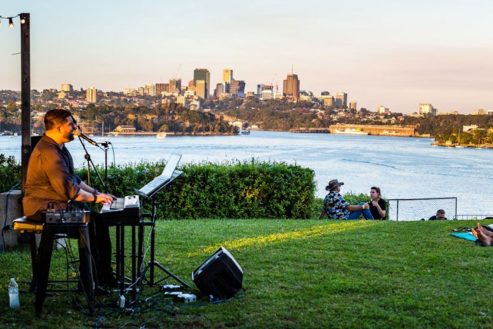
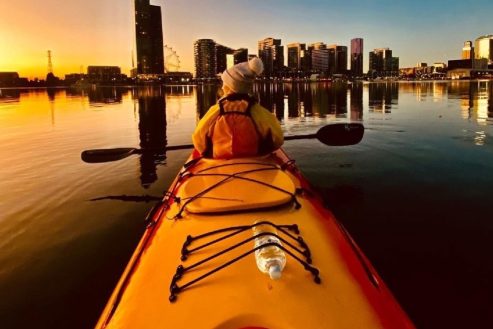
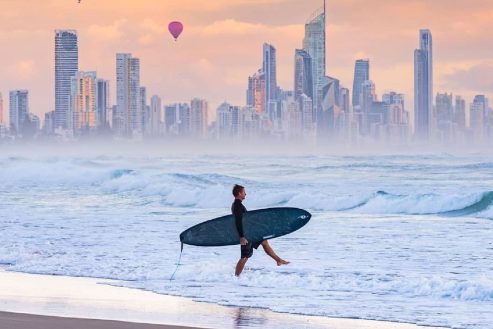

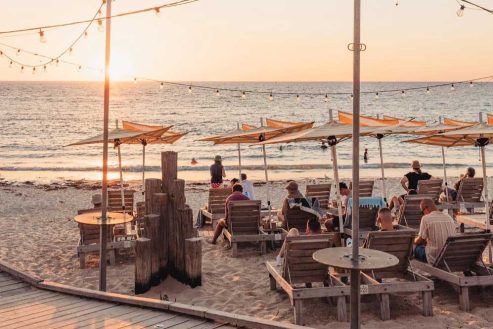
This Bulletin and its contents is for general information purposes only and should not be used as a substitute for consultation with professional advisors.
As legislation and travel requirements are constantly changing, we strongly recommend obtaining advice on your individual situation from a Registered Migration Agent. Please click here to book a consultation with one of our Registered Australian Migration Agents, located in Australia.






You can manage your membership and billing method by clicking here
Terms of Service
Privacy Policy
Copyright © 2025 Office of Immigration Australia, a private company registered in Australia. All Rights Reserved.